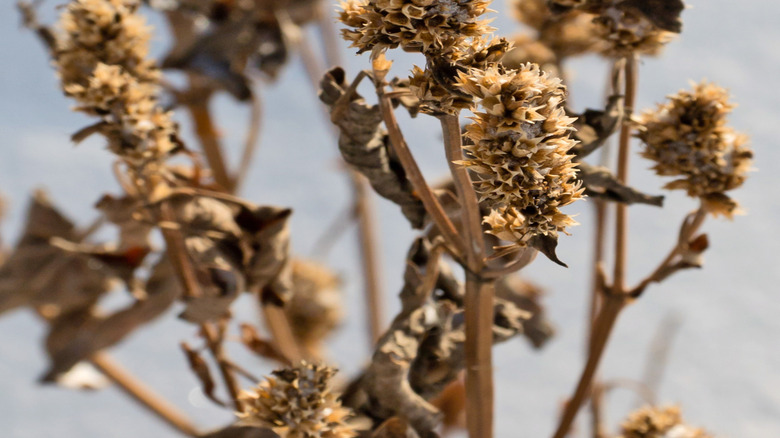Tips For Pruning Agastache To Attract More Hummingbirds Next Spring
When it comes to keeping your garden lively with hummingbirds, few plants work harder than agastache. These vibrant, fragrant perennials — sometimes called hummingbird mint or giant hyssop — thrive in full sun and reward gardeners with long spikes of blooms from summer well into fall. When plants fade after flowering, the way you handle those old stems determines how many new blossoms you'll see later. A few smart pruning habits can mean a more hummingbird-friendly, bushy plant come the following spring.
The agastache genus includes about 22 species, which are hardy in USDA Zones 5 to 10 and grow best in well-drained soil that doesn't stay wet over winter. Anise hyssop (Agastache foeniculum) is one of many herbs you should grow to attract more hummingbirds to your garden, and it's also one of the more well-known species. These plants attract hummingbirds, and one of the reasons for this is that hummers use sight to find food and prefer red, orange, and pink tones (all of which can be found among the agastache genus).
Winter care and pruning are crucial to the success of your new blooms, but pruning also helps prevent unwanted cross-pollination between agastache species if you grow several kinds together. Removing old flowers and volunteers (plants that grow on their own) limits hybrid seedlings that may not match the parent plant. For gardeners who prefer to let agastache self-sow, skip some deadheading so a few seeds fall naturally — especially useful since the plant can be short-lived.
When to prune agastache for more blooms in the spring
During the growing season, deadhead any of the faded blooms of your agastache plants to trigger new flower spikes to grow. This encourages repeat flowering, extending the nectar supply when hummingbirds are known to be the most active between April and October. By late summer, if you don't mind the plants reseeding, stop removing the spent flowers so that seeds can form — small birds such as goldfinches will feed on them through winter.
After frost, resist cutting down your plants completely — they still have plenty left to give, even if it doesn't look like it. Choose the best mulch for your winter flower beds and leave the stalks in place to shelter alongside some winter mulch to protect the crown of the plants. Once the warmth of spring returns and new growth emerges from the base of your agastache plants, prune away all dead stems to make room for branching shoots. Cutting back at this stage pushes your plant to create dense clumps that grow bushier over time and support more blossoms for visiting pollinators.
Gardeners could also plant some hummingbird mint companions to attract more feathered friends or choose varieties that are cultivated to bloom in spring to supplement those that bloom in summer and fall. Hybrids like 'Acapulco Orange' Giant Hyssop and the 'Red Happiness' Giant Hyssop are both plants that bloom from spring to fall, ensuring that you'll be able to support hummingbirds with your garden until frost.

